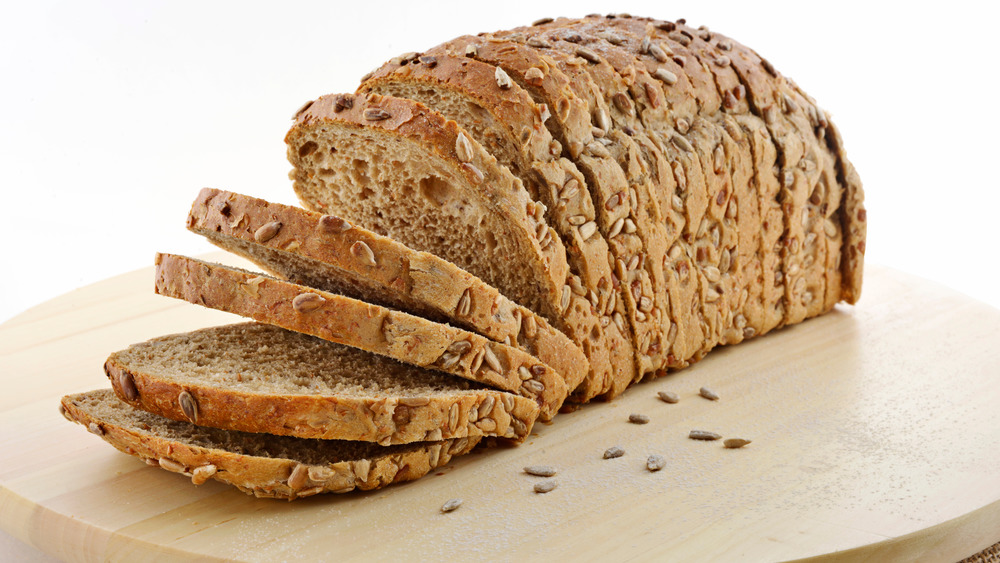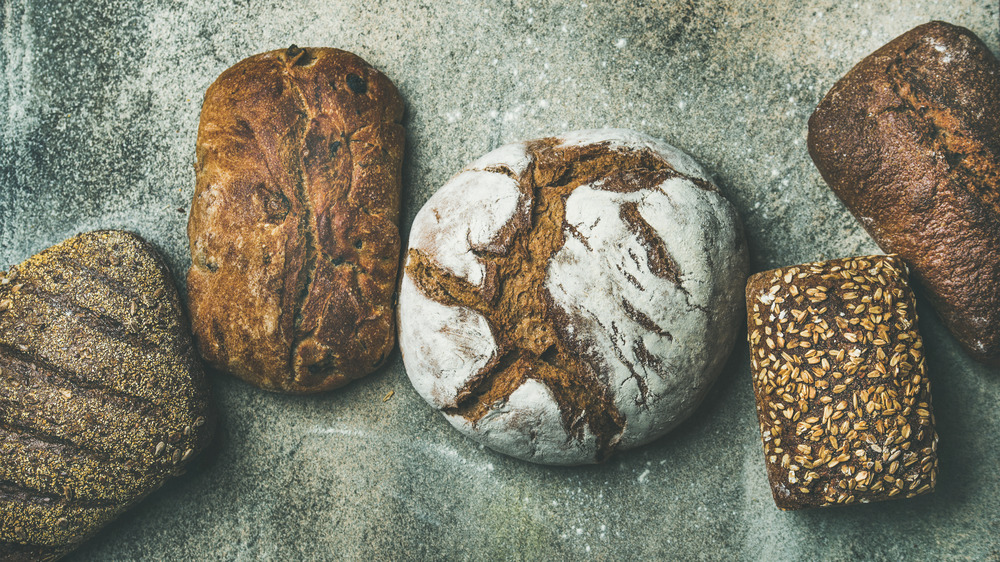Why You Should Think Twice Before Eating Multigrain Bread
Do you give yourself a little imaginary pat on the back for making a healthy choice when you push your shopping cart straight pass the white bread and instead choose a loaf of multigrain bread? There's nothing wrong with some positive self-talk, of course, but if your goal is to eat the most nutrient-dense foods, you might need to rethink whether your daily lunch routine of a turkey sandwich on sliced multigrain is as good for you as it sounds. That's because the word "multigrain" does not always mean that the multiple grains used to bake your loaf are good for you.
At least, that's how Amy Shapiro MS, RD, CDN, founder of Real Nutrition, explained it when we asked her about this starch's popular perception as a health food. "Multigrain simply means it has been made with multiple grains, and that can mean two grains or 12 grains," she told Mashed. "It is important to read the label to determine how healthy your individual multigrain bread is."
Watch out if your multigrain bread contains white flour
The big thing to watch for when it comes to multigrain is whether one of those grains is coming from white bread, Shapiro added. Every single one of the grains has to be a whole grain. With the label "multigrain," she explained, "you are not guaranteed that all the grains used are whole grains; they may be processed or the majority of the bread can come from white bread and have some other grains mixed in."
But why would a little bit of white flour be that big of a deal, if there are some other, more virtuous whole grains also included? According to Shapiro, it's all that goes into producing white flour-based breads that could make your multigrain bread unhealthy. "I am mostly concerned ... if there is white flour as the base, if the other grains included are in whole form, or [if] are they processed and void of natural fibers," she said. "Read the labels. Are they sweetened? Do they have stabilizers?"
The real difference between whole grain and multigrain bread
If the thought of trying to piece out which grains in your multigrain bread come from white flour and which come from whole grain flour is overwhelming, dough-not despair! Your best bet is to just avoid the confusing multigrain bread label altogether and choose whole grain bread, which will have that hearty, wholesome taste you're probably craving when you go for multigrain in the first place.
According to Shapiro, whole grain is a safer choice. "Whole grain means the grains included are in their whole, non-processed form, so you are getting all the nutrients and the fiber from those grains," she explained. "Multigrain just means multiple different types of grains are included, and they do not specify if they are in their whole form or not." When in doubt, take a good, hard look at the ingredients list on your bread. "This is where label reading comes into play," Shapiro said. "Read the label. Look for terms like: 100 percent whole wheat [or] whole grains listed as the ingredients."


